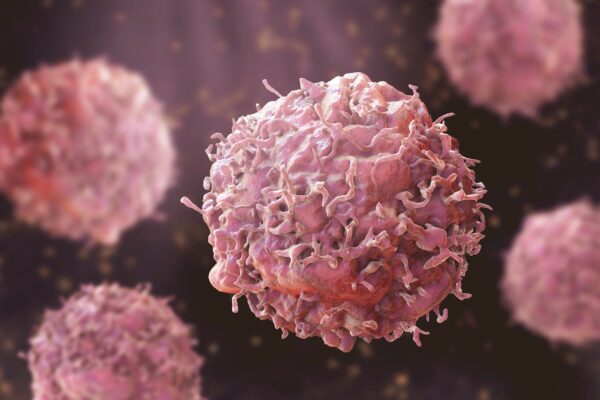
ATR kinase inhibition in preclinical tumour models is known to inhibit tumour growth. In the presented phase I trial, the ATR inhibitor BAY 1895344 was able to induce durable partial responses in a proportion of heavily pretreated patients with solid tumours harbouring defects in the DNA damage repair cascade.

‘ATR is a kinase that recognizes ssDNA damage leading to a cell cycle checkpoint activation in the DNA damage response (DDR) pathway. Targeting ATR provides synthetic lethality in cancer cells that have genomic DDR pathway defects and ATM pathway inactivation. Inhibitors of ATR are being developed, including BAY 1895344. The molecular selection thus includes cancers with DDR defects, including ATM pathway inactivation. The tolerance of this drug is good, and some patients in this phase 1 study achieved a PR with a long median duration. The trial results are promising, and the study is currently being expanded.’
‘ATR mutated cancers are not eligible for these drugs as ATR is a tumor suppressor gene. The same drug is also active in the preclinical setting, combined with chemotherapy, radiation and hormonal manipulation in cancers that do not have these specific genomic alterations. In this case, the drug serves at increasing the activity of the DNA damaging cancer therapy. Several clinical trials testing this hypothesis are ongoing, but to date it remains unclear whether a clinical benefit will be observed as no specific cancer cell mechanism is being addressed. It could well be that the therapeutic efficacy is accompanied by a parallel increase in toxicity (therapeutic ratio not improved). A similar situation is seen when PARP inhibitors are combined with chemotherapy, which leads to sharp decreases in tolerable doses for the PARP inhibitor and the chemotherapy and no clinical benefit of the combination.’
The ataxia telangiectasia and Rad3-related (ATR) kinase is an essential component of the DNA damage response (DDR) cascade, which isolates genomic alterations and secures the integrity of the genome during cell replication. ATR inhibition was shown to hinder growth in oncogene-driven solid and leukaemia tumour models and is therefore being investigated as a potential anticancer treatment strategy. The ATR kinase inhibitor BAY 1895344 has shown antitumour activity in preclinical studies of various tumour models with DDR defects.
In an attempt to determine the maximum tolerated dose (MTD) of this agent, a first-in-human, phase I dose-escalation study randomised 22 patients with advanced solid tumours or relapsed/refractory non-Hodgkin lymphoma to receive BAY 1895344 at a dose of 5 to 80 mg twice daily (BID) in a 3 days on, 4 days off schedule until disease progression, unacceptable toxicity of withdrawal of consent. Enrolled patients had to be enriched for tumours with certain DDR defects, including ATM deleterious mutations or loss of protein expression.
The median age of patients in the study was 63 years, almost three quarters of participants had received at least 4 prior lines of therapy and 54.5% were resistant to platinum-based therapy. The most common tumour types were breast, prostate and colorectal cancers (all 18.2%). Importantly, 50% of patients had 1 or more ATM aberrations at baseline. The MTD was determined at 40 mg BID, with dose-limiting toxicities (DLTs) observed in 6 patients at dose levels higher than the MTD. At time of data cut-off, the median duration of treatment was 64.5 days, the median duration of response was 315.5 days and 5 patients were receiving ongoing treatment. Overall, 21 participants were evaluated for tumour response, with 4 of them achieving a partial response (2 at MTD, 1 at 60 mg, 1 at 80 mg). Interestingly, all 4 of these patients harboured ATM aberrations. The objective response rate (ORR) in patients treated at or above the MTD was 30.8%, mounting to 36.4% in the subgroup of patients with ATM aberrations. The rate of disease control was 57.1% in the overall population and 69.2% in patients treated at or above the MTD. Maximum plasma concentration was reached 1 hour after administration, with a mean terminal half-life of 11.5 hours. The most common all-grade treatment-emergent adverse events were anaemia (81.8% [all grade 3]), neutropenia (72.7% [grade 3/4: 54.5%]) and thrombocytopenia (45.5% [grade 3/4: 18.2%]) and were manageable with dose interruption or reduction.
Reference
Yap A T et al., First-in-Human Trial of the Oral Ataxia Telangiectasia and RAD3-Related (ATR) Inhibitor BAY 1895344 in Patients with Advanced Solid Tumors. Cancer discovery. 2021 Jan; 11 (1)